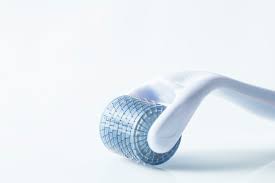Percutaneous delivery of compound lidocaine cream with roller microneedles can shorten the effective time of anesthesia and has a good analgesic effect without adverse reactions, according to findings from a study published in the Journal of Cosmetic Dermatology.
The findings are based on an analysis of individuals aged 18 to 65 years with a diagnosis of loose skin, enlarged pores, and chloasma or acne scars.
Using a 2-factor randomized block design of 3 (anesthesia time on the test side: 30, 45, and 60 minutes) × 2 (the test side: the left and right side), the researchers classified the participants by anesthesia time into group A (n = 30; mean age, 29.7 ± 8.36 years), group B (n = 30; mean age, 27.7 ± 6.45 years), and group C (n = 30; mean age, 29.2 ± 9.11 years).
On the test side, compound lidocaine cream was used for topical anesthesia for 10 minutes, followed by use of the roller microneedle to roll the treatment area with even force. Compound lidocaine cream was then supplemented, and the topical anesthesia was continued for 20 minutes (group A), 35 minutes (group B), and 50 minutes (group C). The control side was the mirror symmetrical area of the test side of the 3 groups, and the compound lidocaine cream was used for topical anesthesia for 60 minutes.
Among the cohort, 17 participants were mainly diagnosed with loose skin, 26 with enlarged pores, 10 with chloasma, and 37 with acne scars, all of which were bilateral and symmetrical.
In the comprehensive evaluation, the difference in the intragroup comparison was not statistically significant between the 30-minute test side and the control side in group A, the researchers noted. The 45-minute test side in group B had better analgesic effect vs the control side, and the 60-minute test side in group C had better analgesic effect compared with the control side. Significant differences were observed in the test side among the 3 groups (H = 10.428; P < .05). The 60-minute test side of group C had better analgesic effect vs the 30-minute test side of group A (adjusted P = .005), which was statistically significant.
The tolerance evaluation, compliance evaluation, and anesthesia satisfaction of percutaneous delivery of compound lidocaine cream by roller microneedles and indwelling anesthesia for 30 minutes were the same as that of compound lidocaine cream for 60 minutes.
In the tolerance evaluation, the 45-minute test side in group B was better vs the control side, and the 60-minute test side in group C was better vs the control side. On the compliance scale, the 60-minute test side in group C was better compared with the control side. In anesthesia satisfaction, the 45-minute test side in group B was better compared with the control side, and the 60-minute test side in group C was better vs the control side.
The comfort evaluation of percutaneous delivery of compound lidocaine cream by roller microneedles with indwelling anesthesia for 30 minutes was the same as that of compound lidocaine cream for 60 minutes, which significantly improved with the extension of anesthetic retention time.
Regarding adverse reactions, no statistically significant differences were observed in postoperative bruising, swelling, pain, discoloration, redness, and tenderness between the test side and the control side (P > .05).
“The percutaneous delivery of compound lidocaine cream by roller microneedles can shorten the anesthesia effect onset time of compound lidocaine cream, has a good topical analgesic effect, significantly reduces the pain during the operation, avoids suspension of the operation caused by the painful stimulation, shortens the operation time to a certain extent, greatly reduces the physical and psychological pain of the subjects, without obvious side effects, and quickly after operation,” the researchers concluded.
Post time: Jul-08-2022






